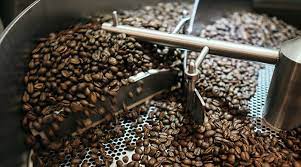If you’re a coffee lover, you’ve probably noticed mold growing on your coffee grounds at some point. Mold is a type of fungus that thrives in damp and humid environments, and coffee grounds provide an ideal breeding ground.
But is mold on coffee grounds dangerous? The short answer is that it depends on the type of mold and how much of it is present.
In this article, we’ll take a closer look at the potential health risks of consuming moldy coffee grounds and how to prevent mold growth in the first place.
What is mold?
Mold is a type of fungus that can grow on almost any surface as long as there is moisture present. It reproduces by releasing spores into the air, which can then land on other surfaces and grow into new colonies.
Mold is ubiquitous in the environment, and it plays an essential role in breaking down organic matter. However, some molds can produce toxic substances called mycotoxins that can be harmful to humans and animals.
What causes mold to grow on coffee grounds?

Mold grows best in warm, damp, and humid environments. Coffee grounds provide an ideal breeding ground for mold because they are often moist and contain a lot of organic material. If coffee grounds are stored in a damp or humid environment, mold can quickly take hold and spread.
Is mold on coffee grounds dangerous?
The answer to this question is not straightforward. Some types of mold are harmless, while others can produce mycotoxins that can be harmful to humans. The most common types of mold found on coffee grounds are Aspergillus and Penicillium.
While some strains of these molds are harmless, others can produce mycotoxins that can cause health problems.
Ingesting mycotoxins can cause a range of symptoms, including nausea, vomiting, abdominal pain, diarrhea, and fever. In severe cases, mycotoxins can cause liver and kidney damage, immune system suppression, and even death.
However, it’s essential to note that the likelihood of experiencing these symptoms from consuming moldy coffee beans grounds is relatively low. The amount of mycotoxins present in coffee grounds is generally minimal, and the risk of adverse health effects is relatively low.
Preventing mold growth on coffee grounds
Preventing mold growth on coffee grounds is relatively straightforward. Here are a few tips to help you keep your coffee grounds mold-free:
1. Store coffee grounds in a dry and cool place:
Keep your coffee grounds in an airtight container in a cool and dry place. Avoid storing them in a damp or humid environment, such as a refrigerator or a cabinet near a sink.
2. Use coffee grounds within a week:
Coffee grounds can quickly become moldy if they are left sitting for too long. Try to use your coffee grounds within a week of opening the package.
3. Don’t reuse coffee grounds:
Using coffee grounds more than once can increase the likelihood of mold growth. If you want to save money on coffee, consider buying a reusable coffee filter and using fresh coffee grounds each time.
4. Clean your coffee maker regularly:
Mold can grow inside your coffee maker if it’s not cleaned regularly. Be sure to clean your coffee maker according to the manufacturer’s instructions to prevent mold growth.
Conclusion
In conclusion, mold growth on coffee grounds is generally not a significant health risk. While some types of mold can produce mycotoxins that can be harmful to humans, the amount of mycotoxins present in coffee grounds is typically minimal.
However, it’s still important to take steps to prevent mold growth on your coffee grounds to ensure that you’re not exposing yourself to any unnecessary health risks.
By storing your coffee grounds in a dry and cool place, using them within a week, not reusing them, and cleaning your coffee maker






